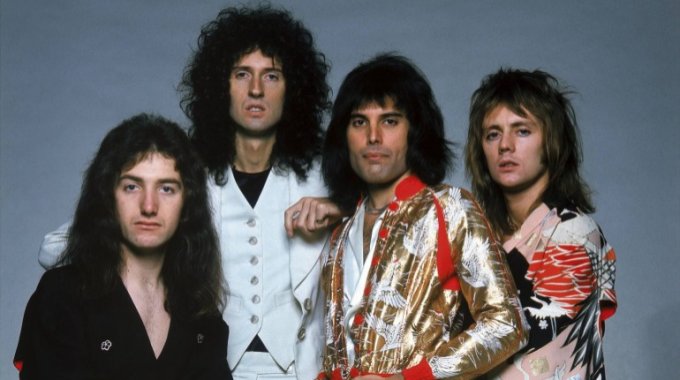The question of whether Queen Charlotte, wife of King George III, was Black has captivated audiences and historians alike, especially with the recent surge of interest sparked by popular television series. For centuries, whispers and theories have circulated, suggesting that this influential monarch, who shaped the British royal family, may have had African ancestry. This isn't just a historical footnote; it's a fascinating debate that challenges conventional perceptions of European royalty and prompts us to look deeper into the complex tapestry of history.
The conversation around "was Queen Charlotte Black" has gained unprecedented traction, moving from academic circles to mainstream discourse. It forces us to confront historical narratives, examine visual evidence, and consider the implications of a multiracial figure at the heart of one of the world's most prominent monarchies. Let's delve into the theories, the evidence, and the enduring legacy of a queen whose heritage remains a subject of intense discussion.
Table of Contents
- The Enduring Question: Was Queen Charlotte Black?
- Biography of Queen Charlotte
- The Moorish Ancestry Theory: Unpacking the Claims
- The Portraits and Their Interpretation
- Historical Disagreement and Lack of Definitive Proof
- "Bridgerton" and "Queen Charlotte": Fictional Portrayal vs. Historical Record
- Why Does This Matter? The Significance of a Multiracial Royal
- Beyond Queen Charlotte: Other Potential Black Royals
The Enduring Question: Was Queen Charlotte Black?
The debate over whether Queen Charlotte was Black is not new; it has been rumored for years and years, persisting for centuries. At its heart lies the claim that she had African ancestry, specifically through a Moorish mistress in her Portuguese lineage. This theory posits that she was the first multiracial member of the British royal family, a groundbreaking notion that challenges traditional historical narratives. The question of "was Queen Charlotte Black" is more than just a historical curiosity; it delves into issues of identity, representation, and the often-overlooked diversity within European history. It's a matter of history, and it's something that continues to fascinate and divide.Biography of Queen Charlotte
Born Princess Sophie Charlotte of Mecklenburg-Strelitz on May 19, 1744, Queen Charlotte's life took an extraordinary turn when she was chosen to marry King George III. She arrived in London and met him for the first time on September 8, 1761, marrying him just six hours later. This swift union marked the beginning of a long and prolific marriage that produced 15 children, including two future British kings, George IV and William IV. Queen Charlotte was more than just a consort; she was a significant figure in her own right. She was a patron of the arts, an amateur botanist who helped establish Kew Gardens, and a devoted mother. Her husband's eventual struggles with mental illness placed a heavy burden on her, and she managed the royal household with resilience and dignity. Her influence extended beyond the domestic sphere, subtly shaping court life and contributing to the cultural landscape of Georgian England. Her enduring legacy is tied not only to her prolific family but also to the persistent question: was Queen Charlotte Black?Personal Data: Queen Charlotte
| Full Name | Sophie Charlotte of Mecklenburg-Strelitz |
| Born | May 19, 1744 |
| Died | November 17, 1818 |
| Spouse | King George III |
| Children | 15 (including King George IV and King William IV) |
| Reign | Queen Consort of Great Britain and Ireland (1761-1818) |
| Ancestry Claim | Disputed African/Moorish ancestry through Portuguese royal line |
The Moorish Ancestry Theory: Unpacking the Claims
The core of the argument suggesting "was Queen Charlotte Black" lies in claims of her direct descent from a Black branch of the Portuguese royal family. This lineage is traced back through several generations, connecting her to individuals who are believed to have had African heritage. The theory gained significant traction through the work of historian Mario de Valdes y Cocom, who meticulously researched her genealogy.Alfonso III and His Moorish Concubine
One of the key figures in this genealogical puzzle is Alfonso III of Portugal (1210-1279) and his concubine, a Black Moor named Madragana. It is claimed that Madragana was the mother of Alfonso III's son, Martin Alfonso, who then became an ancestor in Queen Charlotte's lineage. This connection to a Black Moorish individual is central to the argument that Queen Charlotte had African ancestry. The term "Moor" in historical context often referred to people of North African and Arab descent who inhabited the Iberian Peninsula, and it sometimes included individuals with sub-Saharan African roots.The Portuguese Connection and African Features
The theory asserts that Queen Charlotte's family lineage can be traced back to the Portuguese royal family, despite her being German by birth. This connection is vital, as it provides the pathway for the alleged African heritage to enter her family tree. Proponents of the theory point to her "African features" as depicted in portraits, suggesting these physical traits are consistent with her purported Portuguese heritage, which linked her to the Black Magi and the Moorish mistress of Alfonso of Portugal. This perceived visual evidence further fuels the debate surrounding "was Queen Charlotte Black."The Portraits and Their Interpretation
One of the most frequently cited pieces of evidence in the debate about "was Queen Charlotte Black" comes from the visual record: her portraits. Scottish painter Allan Ramsay's portrait of Queen Charlotte in her coronation robes has particularly inspired debate. Ramsay, an abolitionist, painted Queen Charlotte multiple times, and some art historians and proponents of the theory argue that his depictions subtly emphasize features that could be interpreted as African. For instance, her nose, lips, and facial structure in certain portraits are highlighted as having characteristics often associated with people of African descent. This interpretation, however, is not universally accepted. Critics argue that artistic styles of the period, lighting, and the subjective nature of interpretation can lead to varied conclusions about a subject's features. Furthermore, the concept of "African features" itself can be broad and open to misinterpretation, especially when applied across different historical periods and geographical regions. Nevertheless, the question of whether Ramsay's portraits hint at her heritage remains a central point in the discussion.Historical Disagreement and Lack of Definitive Proof
Despite the compelling nature of the ancestry theory and the visual interpretations, historians disagree on the evidence and the meaning of her features in portraits. There is no definitive, universally accepted proof that Queen Charlotte was Black in the way that modern racial classifications define it. The historical record from that period often lacked the kind of detailed genealogical information that would conclusively prove or disprove such a claim, especially regarding distant ancestry and the precise racial makeup of individuals centuries ago.What Historians Say
Many mainstream historians acknowledge the theory but often treat it with caution, citing the lack of concrete, irrefutable evidence. They point out that terms like "Moor" were often used broadly and didn't always denote specific racial origins as understood today. Furthermore, the intermarriage among European royal families was extensive, and tracing a single "Black branch" without clear documentation becomes highly speculative. The consensus among many scholars is that while the theory is intriguing, it remains unproven.Buckingham Palace's Stance
Buckingham Palace has largely maintained a neutral stance on the matter. While they have not officially endorsed the claim that Queen Charlotte was Black, they have also not explicitly denied it. Instead, Buckingham Palace has echoed Hilton's sentiment around the significance of the theory, acknowledging its historical interest without making a definitive statement. This measured response reflects the complexity of the issue and the lack of conclusive historical records."Bridgerton" and "Queen Charlotte": Fictional Portrayal vs. Historical Record
The Netflix series "Bridgerton" and its prequel "Queen Charlotte: A Bridgerton Story" have undeniably brought the question "was Queen Charlotte Black" to the forefront of public consciousness. These Shondaland productions, based on the romance novels by Julia Quinn, take substantial liberties with the historical record. In the series, Charlotte (played by India Amarteifio in one timeline and Golda Rosheuvel in a later one and in Bridgerton) is explicitly portrayed as a Black woman whose marriage opened doors for people of color in 18th-century British society. The premiere of "Queen Charlotte: A Bridgerton Story" specifically tries to cement the public image of the monarch as an undeniably Black woman. While this portrayal has been praised for its inclusivity and for sparking important conversations about diversity in history, it is crucial to remember that these are fictionalized accounts. They are works of historical fiction, meaning they use historical settings and figures as a backdrop for a dramatic narrative, often with significant deviations from documented facts. The series uses the historical theory as a springboard for its creative vision, rather than presenting a strictly accurate historical account. This distinction is vital for viewers to understand when engaging with the question of Queen Charlotte's true heritage.Why Does This Matter? The Significance of a Multiracial Royal
The question of "was Queen Charlotte Black" resonates deeply for several reasons. Firstly, it challenges the often-homogenized narrative of European royalty, which is typically depicted as exclusively white. Discovering a multiracial figure at such a high echelon of power would fundamentally alter our understanding of historical power structures and racial dynamics. It would suggest a more complex and interconnected world than often portrayed. Secondly, for many people of color, particularly those of African descent, the idea of a Black queen in British history offers a powerful sense of representation and historical validation. It provides a connection to a past from which they have often been excluded or marginalized in traditional historical accounts. This desire for representation is a significant driver of the public's interest in the theory. Finally, the debate encourages a more critical examination of history itself. It prompts us to question who writes history, whose stories are told, and whose are omitted. It highlights the fluidity of racial classifications over time and the impact of colonial narratives on historical interpretation. Whether or not Queen Charlotte was definitively Black, the ongoing discussion about her heritage serves as a valuable reminder of the rich, often hidden, diversity within human history.Beyond Queen Charlotte: Other Potential Black Royals
While the focus has largely been on "was Queen Charlotte Black," it's worth noting that she might not have been the first, even if the theory holds true. Some historical accounts suggest that Philippa of Hainault, who married King Edward III in the 14th century, was the first Black Queen of England. This claim is also debated among historians, with similar challenges regarding definitive proof and the interpretation of historical records and portraits. The existence of such theories for multiple historical figures underscores a broader point: the historical record is often incomplete, and our understanding of race and identity has evolved significantly over centuries. The pursuit of these historical truths, even if they remain unproven, enriches our collective understanding of the past and opens up new avenues for exploring the diverse human experiences that shaped the world we live in.Conclusion
The question "was Queen Charlotte Black" remains one of history's most intriguing and debated mysteries. While the popular Netflix series "Queen Charlotte: A Bridgerton Story" has brought the theory to a global audience, it's essential to distinguish between dramatic license and historical fact. The claims of her African ancestry, stemming from a Moorish concubine in her Portuguese lineage, are compelling and supported by some historical interpretations of her portraits. However, definitive, irrefutable proof remains elusive, and historians continue to disagree on the conclusive evidence. Regardless of whether Queen Charlotte was definitively Black, the ongoing discussion highlights the importance of re-examining historical narratives, acknowledging potential diversity within European royalty, and understanding the evolving nature of racial identity. It serves as a powerful reminder that history is not static; it's a dynamic field of inquiry that continues to reveal new perspectives. What are your thoughts on Queen Charlotte's heritage? Share your insights in the comments below, or explore other fascinating historical articles on our site!

